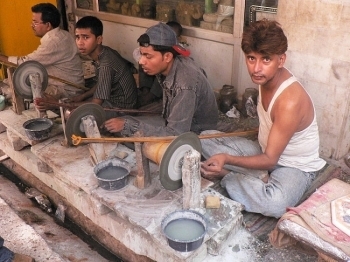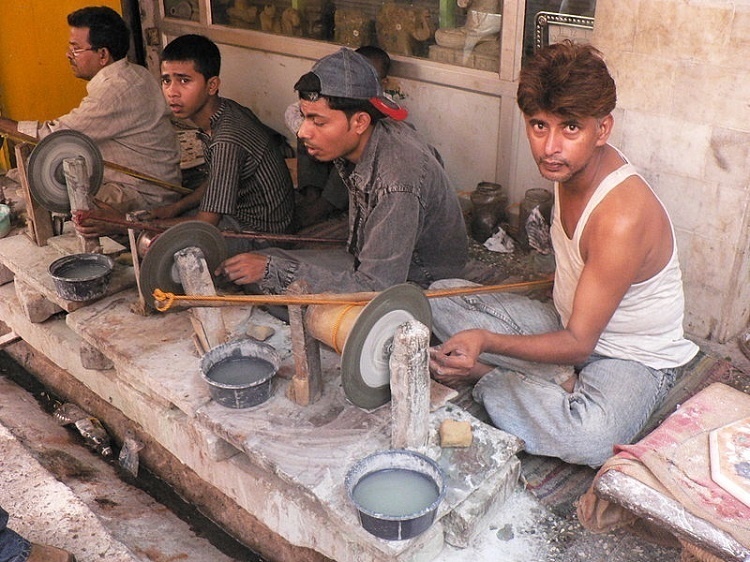
.jpg) Rani Punnasseril
Rani Punnasseril

International Workers’ Day is celebrated on 1st May every year. Known as May Day, the print and online media, on that day, publish a lot of write-ups highlighting the right of workers. The right to livelihood is a fundamental right of every citizen.
I doubt whether all the workers in India know that 1st May is meant to celebrate in commemoration of the historic struggles and gains made by workers and labour movements. Of course, it is a holiday for those in the organized sector; however, it is insignificant for the unorganised workers and migrant workers as they eke out their living on an irregular basis with uncertainty around them of their tomorrow.
Building workers’ power is vital to driving economic, industrial, and social transformation. The international and national system is heavily stacked against workers and their families, and governments are allowing the corporates to grow at the cost of migrant workers.
The recent farmers’ agitation against the farm laws proves the insensitivity towards the nation-builders. Hats off to the farmers for fighting for their rights till their demands were accepted.
The unorganised workers including migrant labourers constitute 90% of the workforce of the country. India’s economy depends on this workforce. During the pandemic lockdowns, these workers faced the most tragic life situation as they lost their livelihood, and places of living due to irrational demolition drives. The demolition drive was so cruel that wherever we reached out for COVID relief service during the first wave, many structures were razed down with bulldozers in the second wave of the pandemic.
The recent demolition drive in Jehangirpuri in Delhi forced many people to believe that it was politically and communally motivated. The members of the minority community were attacked and all of them were unorganied migrant labourers who hardly have a hand-to-mouth living.
Under pressure from the apex courts, the government was forced to come out with the number of migrant workers in India. The government did not have the exact data of migrant labourers; the easy solution was to register all of them on the E-Shram portal. This might bring some data to be documented. This portal is intended to capture details of present status, skill type, family details, address, current location in case of migrant workers and their movement from formal to the informal sector in a consolidated and comprehensive form. The drive for this is in pipeline.
It is surprising that the government believes that all the migrant workers are moving around with a smartphone, ID proofs, as well as they are literate enough to understand the e-Shram portal and fill up the details. It is a mockery to the workforce that without any economic or educational support they are taxed to do what is not familiar to them. So far, no worker has said that they received any benefit from the e-Sharm portal other than promises of different benefits.
The migrant labourers are squeezed out in every way even from the new labour codes about which the Prime Minister boasted saying that everyone will be treated equally, and there will be universal social security.
Unfortunately, the government seems to have failed in achieving it. Either it can be called the exercise of codification of wage laws or sheer amalgamation that has created more confusion than the simplification of wage laws. The new Code is expected to be in place by July 2022. The unorganised workers have no social security. They don’t fulfil the set criteria prescribed by the new codes, which are consciously formulated to exclude them.
The Wire reported on 1st October 2021: Are these codes really “simplifying and rationalising” India’s labour legislations the way the government’s chest-thumping seems to suggest? After doing away with over 44 labour laws, can this “simplifying and rationalising” be used as a justification for bringing about these labour “reforms”?
In 2017, the Satpathy Committee had recommended a minimum wage of Rs 375. Why has the Union government, then, notified the commission of an advisory board for minimum wages under the Wage Code? Notably, the proposed ‘starvation wages’ – a term used for the national floor for the minimum wage under the new code – is a paltry Rs 178.
During the pandemic lockdowns, cities witnessed a huge decline in work for the domestic workers as the employers were asked to work from home and it helped them to combine both home and office. Some of the factories, construction sites and vending carts remain closed even today in the cities. This directly affected the migrant workers and they were penniless. The anxious workers had sleepless nights. Some committed suicide, others begged for work from their former employers. Students from these families have become dropouts. Various schools reported that from 2020 -’22 there are more dropouts.
Loss of jobs, demolition drives, etc. caused increase in human trafficking and bonded labour. Of course, there is a law, Bonded Labour Abolition Act. 1976 which has not been used by many states. If one observes the houses of public servants, highly paid professionals and institutions, there are labourers working round-the-clock. These workers are not accessible to talk. If they mingle with the locals, they might lose their job. It has been observed that they are either underpaid or trafficked. This category of employers damages the name of those who abide by the law.
The Supreme Court of India dealt with the ex
In spite of the laws and the orders from the Supreme Court, the workers, particularly the migrant workers, are not treated equally. They live in shanties, they are underpaid, and they become victims of sexual and economic exploitation. Their roofs are thrown away overnight. They voted their rulers to power only to see the dark days of their lives.
May Day is a time to remember and create awareness of the immeasurable contribution the workers render to our institutions, cities, houses and the nation at large. They must have a comfortable life and livelihood. It is also a time to reaffirm our commitment to the Constitution. India must grow regardless of religion and ethnicity. It needs effort from every religion and there must be political will to work for the welfare of the workers, without whom India cannot flourish. Let there be no more communal violence and exploitation of workers in any corner of India.